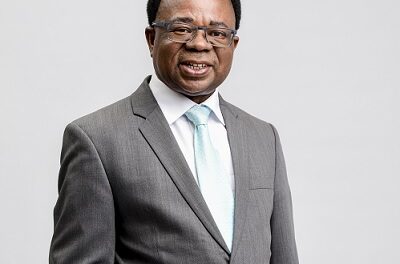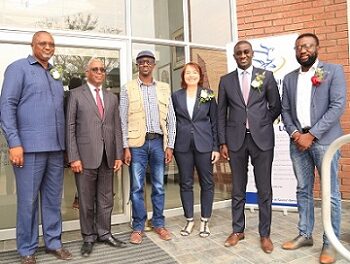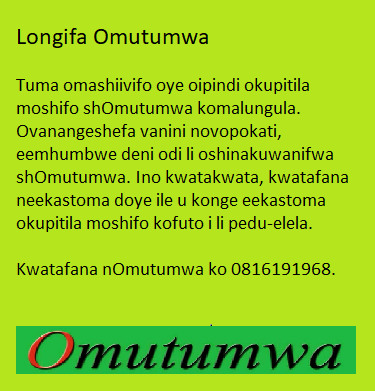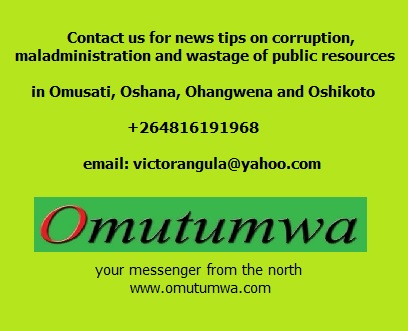By Victor Angula |
In an effort to provide answers, the Ministry of Industrialisation and Trade’s chief information officer Mr Elijah Mukubonda failed to make a strong case for himself after the content of the annual report of the Ministry came out as a clear display of the Government’s poor performance on the road towards industrialisation.
Omutumwa: The Ministry of Industrialisation and Trade has released its Annual Report 2019/20, but the report is practically empty and does not speak about the pressing need and the urgency for industrialisation. Eighteen of the 55 pages of the Report are colorful pictures instead of being colorful words describing how Namibia will reach Vision 2030.
Can you explain why?
Mukubonda: The annual report highlights activities carried out during the reporting period as part of fulfilling its mandate.
The colorful pictures are part for the graphic design, they do not distort anything, and instead, they enhance the format of the report. I am not sure if you preferred black and white outline that will not add much value. Nonetheless, we do not work with your preference here.
Finally, the report is not empty as you ascribe and the number of pages don’t dilute its intended purpose but has meaningful information that many stakeholders appreciated (including development partners that gave thumbs up for the work done).
Omutumwa: In the Report the word “industrialisation” or “industries” has been mentioned 18 times, but at all times the context does not signify or denote any action or work in progress but just a passive statement such as “… various interventions supported by key policies and regulatory framework relating to industrialisation, trade and investment promotion”; or “… develop and expand the country’s industrial base and enable equitable participation in the domestic and international markets.”
Can you explain why the most significant part of the ministry’s mandate, namely industrialisation, has not received a serious impetus during the year under review?
Mukubonda: The scope of the Ministry is specific, during the reporting period the following activities highlighted the Industrialisation segment (namely, Africa industrialisation week and a number of undertakings captured by the industrial performance programme).
Also, the Ministry works with its agencies in accomplishing industrial activities of the country (kindly acquaint yourself with such agencies).
Lastly, your selective view of what you want to see is negative.
Omutumwa: The Ministry’s operational budget’s utilisation was at 93%, yet the development budget, which stood at a meager N$ 49,387,000 was utilised at the rate of 80%.
Can you explain why more than N$ 10 million was not utilised of a development budget which was already small but was meant to cater to the pressing and urgent needs of developmental projects across the country?
Mukubonda: Financial matters, allocation and actual utilisation of budgeted funds are a prerogative of the Ministry guided by ED and the financial adviser.
The budget was determined by the needs of the Office and priority focused on pertinent activities. Viewpoints are different, the Ministry’s perspective is more objective and holistic approach in nature.
We value your contribution, kindly share your perspective of pressing and urgent needs of developmental projects across the country?
Omutumwa: There is only less than 9 years to the Year 2030, a year by which Namibia will be an industrialised nation. Yet in the Report no reference has been made to Vision 2030, the progress so far along the way, challenges, etc.
Can you say why?
Mukubonda: The attainment of V2030 is a collaborative effort with various stakeholders and OMAs. While MIT may spearhead some aspects of the vision, NPC is the overall driver of this particular objective.
Well, over the years the Ministry continues to create industries at a noticeable pace.
The report you are terribly criticizing, bears reference to an important segment – special industrialisation initiative (kindly acquaint yourself with that).
Omutumwa: The former Minister Tjekero Tweya’s speech has been inserted in the Report.
Can you justify why so?
Mukubonda: Each financial year has crucial events that define the period (one, two or more). Every issue of the report captures by selecting a major activity that highlights that specific period.
The main feature of the Annual Report 2019/20 was the SADC Industrialisation Week parallel to the pictures displayed under the component (MIT in pictures).
Hon. Tweya was the Minister then.
Conclusively, the annual report is a yearly publication, highlighting major activities undertaken by the Ministry during the reporting period.
The report is composed at the end of the financial period to make known the activities that already transpired.
The report doesn’t dictate what ought to be displayed but rather a blueprint of activities carried out.
The castigation in your approach doesn’t build, instead of criticizing – kindly share practical suggestions on how to improve the attainment of the Ministerial mandate. You don’t build by breaking down, instead you enhance/edify by building up.
In the photo: MIT’s chief information officer Elijah Mukubonda.








